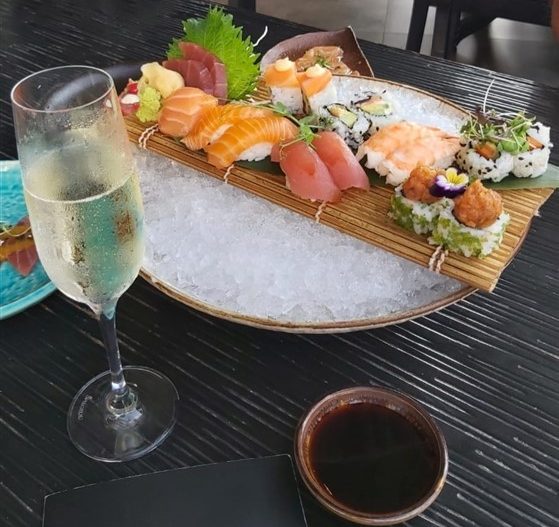Introduction
We answered the question; “What is Culinary Tourism?” also referred to as “Food Tourism” or “Gastronomy Tourism”
In a world that relentlessly seeks new experiences, culinary tourism stands out as a vibrant and immersive way to explore diverse cultures. While traditional tourism often revolves around iconic landmarks and historical sites, culinary tourism invites foodies and travellers to embark on a journey through the heart of a destination’s identity – its food.
As global palates become more adventurous and travel enthusiasts seek out food tours and authentic encounters, the phenomenon of culinary tourism has evolved from a niche interest to a mainstream pursuit.
The Essence of Culinary Tourism
At its core, culinary tourism or food tourism is more than just a quest for delectable dishes; it’s a unique lens through which travellers view the world. Beyond the mere act of consuming food, it encapsulates the experience of understanding a culture’s history, traditions, and way of life. This form of travel goes beyond the traditional sightseeing checklist, encouraging individuals to engage with communities on a more personal level.
Culinary Tourism Destinations Around the World
As we journey into the heart of culinary tourism, it’s essential to highlight the diverse food tourism destinations that have become synonymous with exceptional gastronomic experiences. A food tour can encompass the bustling street markets of Bangkok, where the aroma of exotic spices fills the air, to the quaint vineyards of Tuscany, where each sip of wine tells a tale of centuries-old craftsmanship – culinary tourism knows no bounds.
5 Food Tourism Destinations to Visit
Tokyo, Japan
Tokyo, a culinary mecca, offers a rich tapestry of flavours that range from the precision of sushi to the robustness of ramen. Explore bustling street markets like Tsukiji Fish Market, where the freshest seafood is transformed into exquisite dishes. Engage in the art of kaiseki dining or indulge in the playful world of izakayas, making Tokyo a haven for foodies and those seeking culinary innovation and tradition.
Barcelona, Spain
Barcelona beckons with a vibrant culinary scene that mirrors the city’s artistic spirit. The famed La Boqueria market is a sensory delight, showcasing an array of fresh produce and local delicacies. Dive into the world of tapas, where each bite tells a story of Catalonia’s diverse culinary heritage. From paella on the beach to avant-garde dining at El Bulli’s culinary laboratory, Barcelona offers a feast for the senses.
Marrakech, Morocco
Marrakech, with its labyrinthine souks and aromatic spice markets, is a treasure trove for culinary adventurers. Immerse yourself in the art of tagine preparation and savour the symphony of flavours in dishes like couscous and slow-cooked meats. From street-side stalls to opulent riads, Marrakech invites you to explore the nuanced world of North African cuisine amid the backdrop of vibrant colours and intricate architecture.
Bangkok, Thailand
Bangkok, a city where street food is elevated to an art form, invites travellers on a journey through the diverse flavours of Thai cuisine. Sample pad Thai from bustling street vendors, savour aromatic bowls of green curry and indulge in the sensory explosion of Tom Yum soup. The vibrant street markets, such as Chatuchak, offer an array of Thai culinary delights, making Bangkok a paradise for those seeking bold and aromatic tastes.
Oaxaca, Mexico
Oaxaca, a UNESCO-listed gastronomic hub, is a celebration of Mexican culinary traditions. Explore the Mercado Benito Juarez, where indigenous ingredients come together to create iconic dishes like mole and tlayudas. Street food vendors offer chapulines (grasshoppers) and tlayudas (large tortillas), providing a taste of Oaxaca’s diverse gastronomic heritage. With its rich culinary history and vibrant street life, Oaxaca is a destination for those craving authentic Mexican flavours.
These destinations showcase the diverse and unique culinary experiences awaiting food lovers and travellers, each offering a distinct palette of flavours and cultural influences.
Benefits of Culinary Tourism
The allure of culinary tourism extends beyond the pleasure of the palate. One of its profound benefits lies in the cultural enrichment it offers. Travellers aren’t just consuming food; they are engaging in the stories and traditions woven into every recipe. The act of breaking bread becomes a universal language that fosters connections, breaking down cultural barriers and creating shared experiences.
Moreover, the economic impact of culinary tourism on local food industries and overall tourism cannot be overstated. By patronising local markets, eateries, and culinary experiences, travellers contribute directly to the livelihoods of communities. This symbiotic relationship between travellers and local businesses enhances the sustainability of tourism destinations.
In addition to cultural and economic benefits, culinary tourism provides a sensory feast for the mind. It encourages individuals to develop a nuanced appreciation for the art of cooking, the significance of regional ingredients, and the skill of local chefs. Through this lens, travellers gain a deeper understanding of the intricate tapestry that is global cuisine.
Culinary Tourism Trends
In the dynamic landscape of travel, culinary tourism continues to evolve, embracing new trends that cater to the changing preferences of modern foodies and explorers. One notable trend is the surge in food festivals, where communities celebrate their culinary heritage through lively events. These festivals offer a sensory overload, featuring an array of dishes, cooking demonstrations, and opportunities for visitors to engage directly with local chefs.
Cooking classes have also become a popular facet of culinary tourism. Travellers now seek hands-on experiences, wanting not only to savour local flavours but also to learn the art of crafting those dishes. Whether it’s rolling sushi in Tokyo or perfecting pasta-making in Italy, these classes provide an immersive and educational dimension to the journey.
In the digital age, social media has played a pivotal role in shaping culinary travel choices. Instagram-worthy dishes and viral food trends can turn a local eatery into a global sensation overnight. Travellers and foodies, armed with smartphones and a penchant for sharing, now actively seek out photogenic dishes and hidden gems to showcase on their social media platforms, contributing to the rise of ‘Instagrammable’ food tourism.

Planning a Culinary Trip
For those enticed by the prospect of a food tour or culinary adventure, meticulous planning is key. Researching local markets, culinary tours, and iconic eateries ensures that travellers make the most of their gastronomic journey. Integrating culinary experiences into the overall itinerary allows for a well-rounded exploration, offering a taste of local life in addition to traditional sightseeing.
Considerations such as dietary preferences, allergies, and cultural nuances should be factored into the planning process. A culinary trip isn’t just about trying new dishes; it’s about embracing the entire culinary ecosystem of a destination, from market to table.
Challenges of Culinary Tourism
While culinary tourism promises a feast for the senses, it’s not without its challenges. Travellers may encounter cultural differences that influence dining etiquette and customs. What might be considered polite in one culture could be perceived differently in another. Navigating these subtle differences requires a level of cultural awareness and sensitivity to ensure that culinary exploration is a respectful and enriching experience.
Dietary restrictions and preferences pose another challenge. Travellers with specific dietary needs, whether due to health reasons or personal choices, must carefully navigate menus and communicate their requirements. This requires effective communication with local establishments and an understanding of regional ingredients.
Despite these challenges, many travellers view them as opportunities for personal growth and learning. Embracing the unfamiliar and stepping out of one’s culinary comfort zone can lead to transformative experiences that broaden perspectives and deepen appreciation for diversity.
Personal Stories and Experiences
To truly capture the essence of culinary tourism, it’s valuable to hear from those who have embarked on such journeys. Personal anecdotes and experiences provide a genuine glimpse into the transformative power of exploring the world through taste.
Take, for instance, a traveller who found themselves in the heart of Mexico, savouring the complexities of mole poblano prepared by a local abuela. The flavours told a story of generations, traditions, and the vibrant history of Mexican cuisine. These personal encounters go beyond the plate, creating lasting memories that become an integral part of the travel narrative.
As we delve into these stories, we discover that culinary tourism is not just about the dishes sampled but the connections forged with locals, with history, and with the essence of a place.
The Future of Culinary Tourism
Looking ahead, the trajectory of culinary tourism is poised to embrace sustainability and immersive experiences. Travellers and foodies are increasingly seeking destinations that prioritise locally sourced, sustainable ingredients. The farm-to-table movement, once confined to niche markets, has become a central theme in many culinary destinations. This shift not only supports local agriculture but also ensures a more authentic and environmentally conscious experience for travellers.
Immersive experiences are taking centre stage, with culinary tourism evolving beyond traditional dining settings. Travellers are now drawn to interactive experiences, such as foraging excursions, where they actively participate in gathering ingredients from the natural environment. This hands-on approach not only deepens the connection to the food but also fosters a greater appreciation for the ecosystems that sustain culinary traditions.
Conclusion
In conclusion, culinary tourism or food tourism transcends the act of eating; it is a multisensory journey that invites travellers to connect with the world in a profound and flavorful way. From street food stalls to Michelin-starred restaurants, each culinary encounter becomes a brushstroke in the canvas of travel memories.
As we navigate the diverse landscapes of global cuisine, let us savour not just the dishes but the stories they tell, the traditions they embody, and the communities they represent. Culinary tourism is an invitation to explore, learn, and appreciate the richness of our world—one bite at a time.
Whether you’re a seasoned foodie, traveller or someone embarking on their first culinary adventure, the world is your banquet, offering a symphony of tastes, aromas, and experiences waiting to be discovered.













